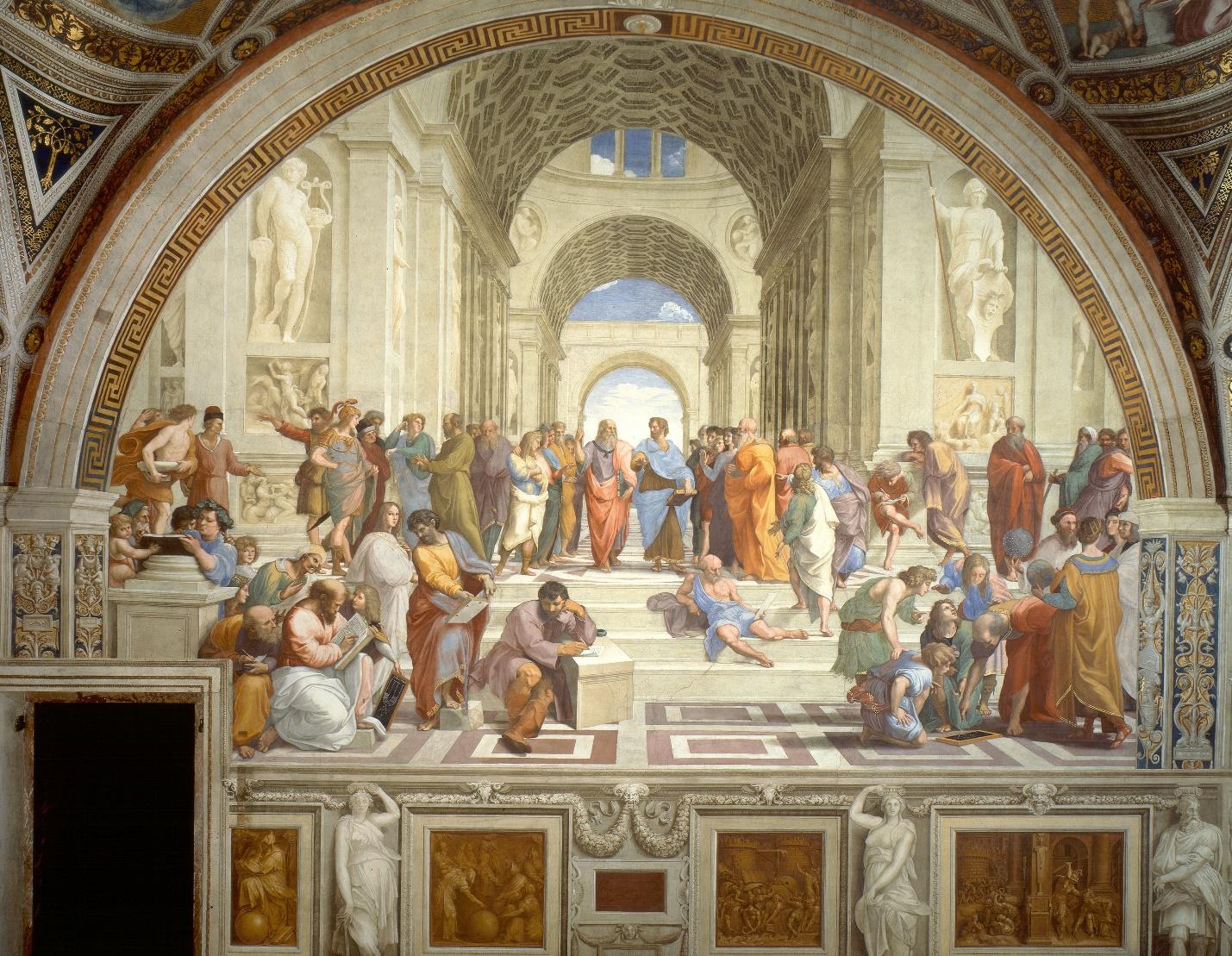
The selected image or painting is “The School of Athens” by Raffaello Sanzio da Urbino, also known as Raphael. It was painted between the years of 1509 and 1511 in Vatican City. It is important to note that the painting is composed of four main frescos, which are combined to create comprehensive imagery. It is stated that the painting “is the largest preparatory cartoon from the Renaissance period preserved to the present day. This extraordinary masterpiece was drawn on paper around 1508. It is one of the 1:1 scale preparatory cartoon for the frescoes cycle of the Vatican chambers” (CITE1, p. 2). In other words, it is an extraordinary piece of art, which encompasses a wide range of both mechanical and symbolic elements. At the very center of the image are representations of Aristotle and Plato, two of the greatest philosophers and thinkers of Ancient Greece.
In addition, the image contains depictions of other well-known thinkers, such as Euclid, Epicurus, and Socrates. The paintings also include the image of Raphael himself alongside the Evangelists, Zoroaster, the Duke of Mantua, and others, such as Ptolemy (CITE1). In other words, the painting contains a number of famous thinkers who lived during different periods of time and at the center of the image are Aristotle and Plato.
In addition, the image has highly detailed elements of architecture, which highlight the overall grandness of the depiction. Moreover, one should note that the painting does not use factual facial imagery of the depicted people since Raphael utilized Leonardo da Vinci’s depiction as Plato, which adds a multilayered sense to the image. In other words, it is evident that the author wanted to include more well-known individuals, therefore, utilized duality of representation techniques, such as using one’s appearance as other character.
The chaotic distribution of people in the painting is also descriptive of the notion of knowledge being created from disorder, where the order is preserved through novel ideas and grand theories. Knowledge is also encompassed in grandness and architectural beauty, where Raphael allocated as much effort into the architectural elements of the hall as the main characters. It is evident that the painter wanted the frescos to represent an epitome of knowledge through the intelligentsia of the past.
Responsive Poem
- I see a grand hall of knowledge
- With Plato guiding Aristotle
- Passing down insight through language
- I see a grand hall of novel ideas
- With Euclid teaching young students
- Resolving mysteries of number in pieces
- I see a grand hall of irony
- Socrates arguing with Aeschines
- Since progress stops tyranny
- I see a grand hall of revolution
- Archimedes helping Pythagoras
- With the enigma of geometric convolution
- I see a grand hall of knowledge
- Geniuses, I am willing to acknowledge.
Reference
Gulotta, D., Villa, T., & Toniolo, L. (2019). Investigating the mechanical behaviour of the lining system for Raphael’s Cartoon “The School of Athens.”Journal of Cultural Heritage, 43, 1-11.